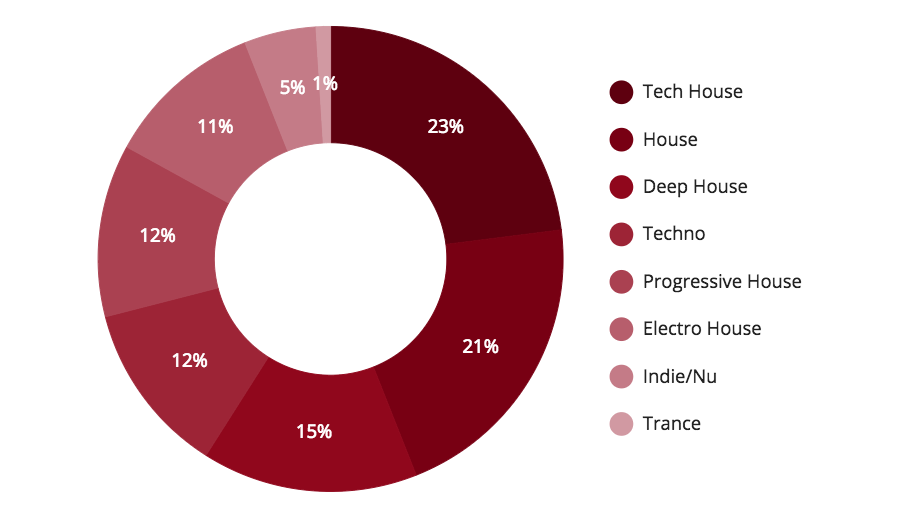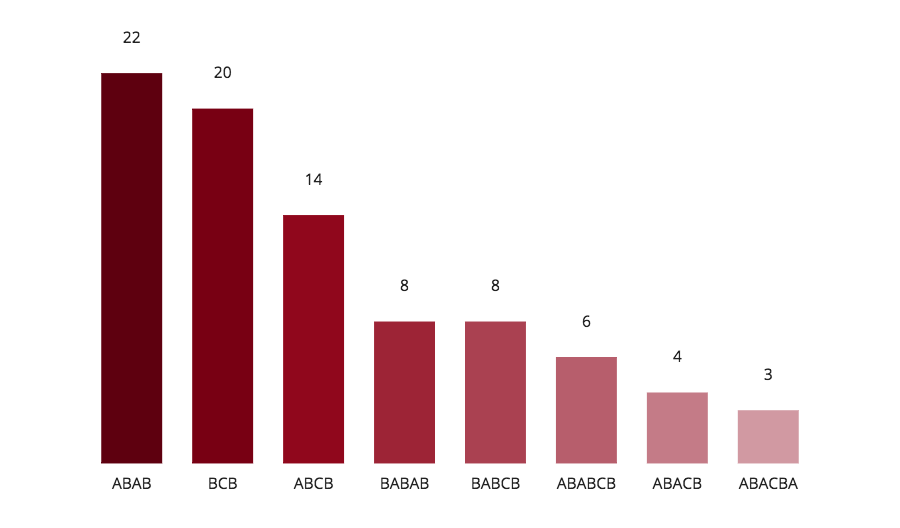In an endeavor to learn and better understand what drives popularity, Sam Matla of EDMProd has analyzed the entire list of tracks from the Beatport Top 100 … and the results are in.
After purchasing the 100 songs, analyzing them all via Ableton Live, importing the data into a spreadsheet, and making that spreadsheet data more easily consumable, Sam has published a noteworthy study that rips away any mystique surrounding the Beatport charts. Using genre, BPM, key, structure, and length as categories, we’re now able to understand precisely what appeals to the masses.
Nestled amongst the charts and notes of the analysis are three important take-aways: A track doesn’t need to be complicated to be successful, structure plays a large role in a track’s success, and the Beatport Top 100 is a diverse showcase.
Though they’re nothing revolutionary or shocking, below are a few statistics provided by EDMProd’s Beatport Top 100 analysis. Click here for the full study, and be sure to check out EDMProd for more information on electronic music production.
Most Common Genres
It’s evident that tech house hasn’t lost its gait, remaining the most popular genre and staying leaps and bounds above progressive and electro regarding Beatport popularity. Trailed by house and deep house variants, this statistic makes complete sense considering these are the cornerstones of electronic dance music. The average length amongst all songs in the top 100 is 5:53, with the shortest being 3:33 and the longest at 8:23. Next up are the findings for most common structures amongst the top 100 tracks.
Most Common Structures
Here’s a guide to make sense of the above graph:
- A: Can mean verse, alternative section, break, or common build-up
- B: Can mean drop or chorus – main section
- C: Bridge, main breakdown, or section of song that differs musically
There were a total of 17 different structures, and not surprisingly, the ABAB and BCB combinations proved the most popular, being featured in 42 of the 100 tracks. The full analysis goes more in depth as to which genres employed which structures.
While the best artists undoubtedly create according to what they feel, studies such as these are invaluable in understanding the direction of our collective taste – or how to take a shortcut to the Top 100. It’ll be interesting to see the applications of this information and what will come of future chart analyses. No doubt there was redbull and a few headaches involved, so here’s a big thanks to Sam Matla for conducting this analysis, and for having the perseverance to see it all the way through.
H/T | EDMProd












